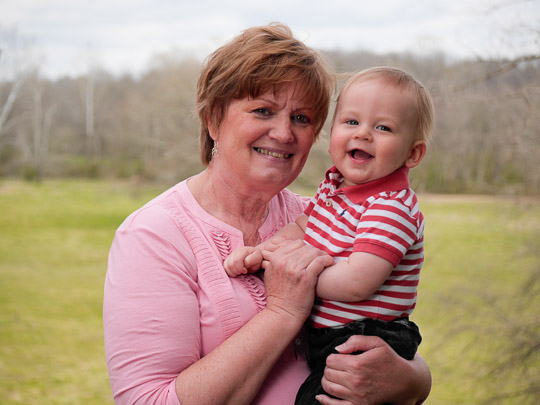As I’ve said before, one of the things I like about the Micro 4/3 cameras from Olympus and Panasonic is the wireless TTL flash system. Cameras like the Panasonic GH3 and Olympus OM-D E-M5 do a great job adjusting the flash output automatically to properly expose your subject. Both cameras can use their pop-up (or clip-on) flash to operate a flash remotely. You can adjust the flash power from the camera while mounting your lights wherever you want them. All you need is line-of-sight so the remote flash can see the light from the commander flash on the camera. An added convenience is that you can use Olympus speedlights with Panasonic cameras and vice versa.
The TTL (through the lens) metering does a good job of judging exposure, but sometimes it’s better to take control of the exposure yourself. When I’m mixing flash with natural light I usually shoot in manual exposure mode, then I let the TTL metering help me to get the right flash exposure.
I used a simple setup for these portraits of my son (on his first birthday!) and his grandmother. I had one FL600r firing into a 24” Lastolite EZYbox to act as a main light, and I used the ambient light (the sun) to light the background and act as a fill light. This setup illustrates one advantage of using the TTL flash system… high speed sync. High speed sync (or FP) allows the camera to sync with the flash at shutter speeds much higher than the sync speed of the camera, which is usually between 1/160 and 1/250 depending on the camera.
I wanted to shoot these portraits with a wide aperture in order to give the background a pleasing blur, and I wanted to underexpose the background a bit and make my subject pop with the flash. I put the subjects in open shade so I wouldn’t have to fight any harsh shadows from the sun. I put my camera (Panasonic GH3) in Aperture Priority mode and set the aperture to f2.8. I dialed the exposure compensation to -1.3 to underexpose the ambient light. I set the flash on in the GH3 to Wireless mode and dialed Group A channel 1 to TTL +1 to add power to the flash exposure. High speed sync allows you to use higher shutter speeds, but you lose a bit of power output from the flash.
The flash exposure was just like I wanted it the first shot, so I didn’t have to make any adjustments there. I figured the +1 for the flash would be pretty close based on my experience with the system. The camera gave me a shutter speed of around 1/3200sec. Did you notice I said “around” 1/3200? The camera’s meter was suggesting between 1/2500 and 1/4000 depending on exactly what was in the frame. The camera can be fooled by everything from more bright sky in the frame to someone wearing a black shirt.
I definitely want my shutter speed consistent from shot to shot. The shutter speed controls the ambient light exposure, so if the shutter speed changes my background brightness changes. For this shot my ambient light is acting as my fill light as well, so if my shutter speed changes so does the shadow brightness on my subjects.
In these examples, the flash exposure (main light) is basically the same while the fill light (ambient light) is 1/3 stop darker. You can see that the brightness of the fill light greatly affects the overall brightness of the image, and not just because the background is darker.
The solution is a simple one… I checked the exposure on the shots I took with the camera in Aperture priority mode and decided that I liked the exposure at 1/2500sec. I switched the camera to manual exposure mode and set the exposure to f2.8 @ 1/2500sec. In this case I still let the camera set the flash exposure because it was doing what I wanted it to. If the flash exposure is inconsistent you can simply switch the flash mode to manual (in the wireless flash menu) and dial it in that way.
This whole process takes longer to read about than it does to actually try it. Using the built-in flash commander and a speedlight or two makes for easy setup and less gear to worry about (and carry!). Remember you lose some power when you’re using high speed sync, so you will probably need to have your lights closer than usual, and maybe dial the power up a bit. Using more than one speedlight is another way to get good results with high speed sync, and it’s easier on your batteries 🙂
The great thing about learning to use flash (or LED’s) is that you don’t have to wait for good light. You can make the light look good whenever you want to!
Happy birthday Deke!





I have a metz 50 and it work very well in FP mode with my OMD. It’s a cheap alternative to the fl600r, it’s only bigger, but work flawlessly.
Yes! I have a Metz 52AF-1 that works very well also. It costs about the same as the FL-600r and it’s not much bigger. The Metz has the cool touch screen too 🙂
one again you created a lovely photo-your mom look so sweet too and it tells she loves deke-
can you tell me in order to make my macro shots if i should have just some sort of light flash for special occasions and also keep it on the light side -or to tell me not to worry -it does make a huge difference in once photos or not—mh
Hi Rob. Great post. One question though. I tried my GH3 paired with a Panasonic FL-360L as a wireless flash. I set up the 360L with a Cheetah soft box (same design look as the lastolite). The problem is, the soft box gets in the way of the line of sight between the 360L and the GH3’s pop up built-in flash. How do you set up your lastolite so that the line of site is not blocked by the soft box? Thanks. Morgan.
Thanks Morgan,
You’ll want to turn the receiver on the flash toward the camera. Other than that you’ll just have to set up the remote flash so that the softbox doesn’t block it. I find that the commander signal will bounce around and find the remote more easily indoors.
Cheers,
Rob
Hi Rob:
Thanks for the pointer. In your experience/set-up, when using the built in flash fires, do you find that the output from the built in flash spill into the image? I am trying to isolate the subject using just the directional flash. 🙂 Thanks ~ Morgan
Morgan,
When you’re adjusting the flash power via the menu in the camera, turn the built-in flash Off. Then it will only fire as a commander and will not figure into your exposure.
Cheers,
Rob
Good evening Bob,
I’ve being shooting the GH3 for about 3 years and your illustration presents another veiw on shooting portraits. I’ve being using a remote sensor that I use to trigger the FL360L flash. I was not aware that the built in flash triggered the flash as I not seen any demonstration of this.
Can you provide a photo or video of the set-up.
Thank you.
Gerald